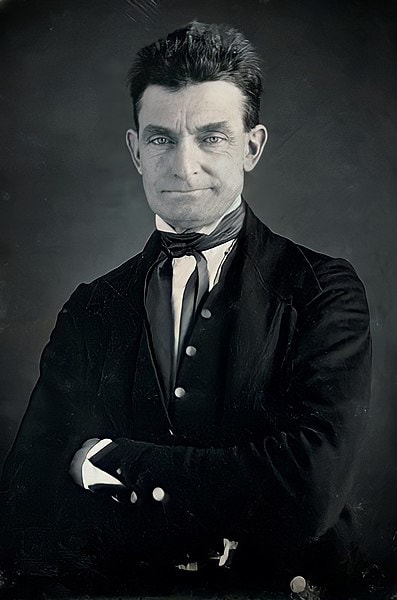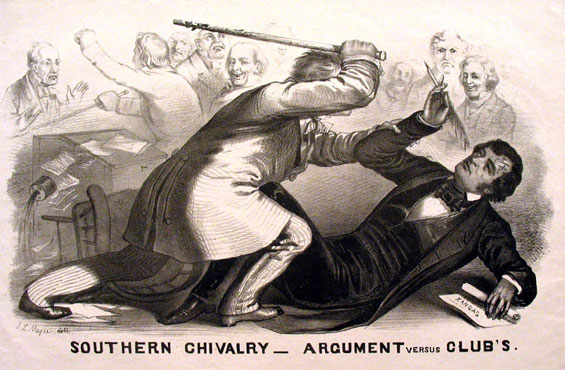|
The controversial Kansas-Nebraska Act, by repealing the Missouri Compromise and applying popular sovereignty in territories that had been previously closed to slavery, created a mad rush to settle the Kansas Territory. Antislavery settlers arrived from as far away as New England, while proslavery settlers augmented their numbers with Missouri residents who crossed the border in order to vote in territorial elections. This timeline follows the saga of "Bleeding Kansas" from its origins to its conclusion. Click here to download my Bleeding Kansas timeline in PDF format.1820 (Missouri Compromise)The Missouri Compromise closed all territory north of the 36°30′ parallel to slavery within the Louisiana Purchase. The territories that would later be organized as Kansas and Nebraska were north of the 36°30′ parallel, so the understanding reached in 1820 was that this territory would be closed to slavery. 1850 (Compromise of 1850)As part of the Compromise of 1850, the New Mexico and Utah Territories were both organized in the Mexican Cession on the principle of popular sovereignty, with Congress leaving the settlement of the slavery question to the settlers, themselves. California is admitted into the Union as a free state. This was the first de facto application of popular sovereignty because the settlers in California drafted and submitted a free-state constitution on their own, without having previously been organized as a federal territory. 1854 (The Kansas-Nebraska Act)
1854-1859 ("Bleeding Kansas")
1855 (The Topeka Constitution)A convention of settlers was held in Topeka, Kansas, which produced the Topeka Constitution, which was a Free State constitution for Kansas. The Topeka Constitution was held up in Congress, not being able to pass through the proslavery Senate. 1856 (The Brooks-Sumner Incident)Charles Sumner, an abolitionist senator from Massachusetts, delivered an inflammatory speech, which he titled, “The Crime Against Kansas,” in which he personally insulted Senator Andrew Butler of South Carolina and went on to disparage his entire state. Preston Brooks, a member of the House of Representatives from South Carolina and a relative of Senator Butler, took it upon himself to beat the living daylights out of Sumner with a cane to avenge the honor of his state. The caning of Charles Sumner became a polarizing incident, as Northerners vilified Brooks as a caricature of a violent Southern slaveholder, while he was hailed as a hero in the South. Southern supporters sent canes to Brooks in appreciation for his efforts.
1857 (The Lecompton Constitution)Proslavery settlers drafted the Lecompton Constitution, which would have established Kansas as a slave state. In spite of support from President Buchanan, the Lecompton Constitution was blocked by the free-state majority in the House of Representatives. 1861 (Statehood)After the secession of the Deep South created a free-state majority in the United States Senate, Kansas was finally admitted into the Union as a free state on January 29, 1861.
0 Comments
Your comment will be posted after it is approved.
Leave a Reply. |
Tom RicheyI teach history and government Archives
May 2023
Categories
All
|




 RSS Feed
RSS Feed